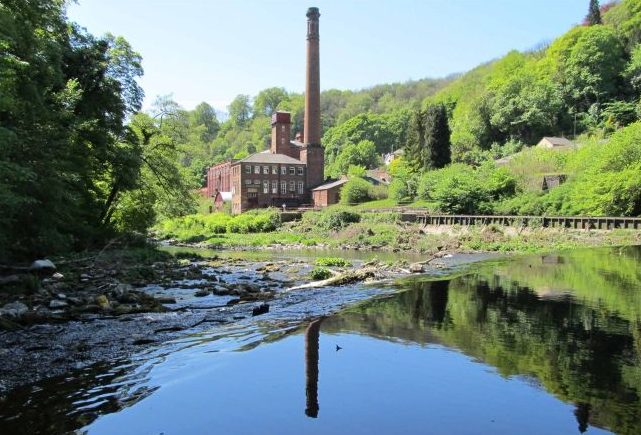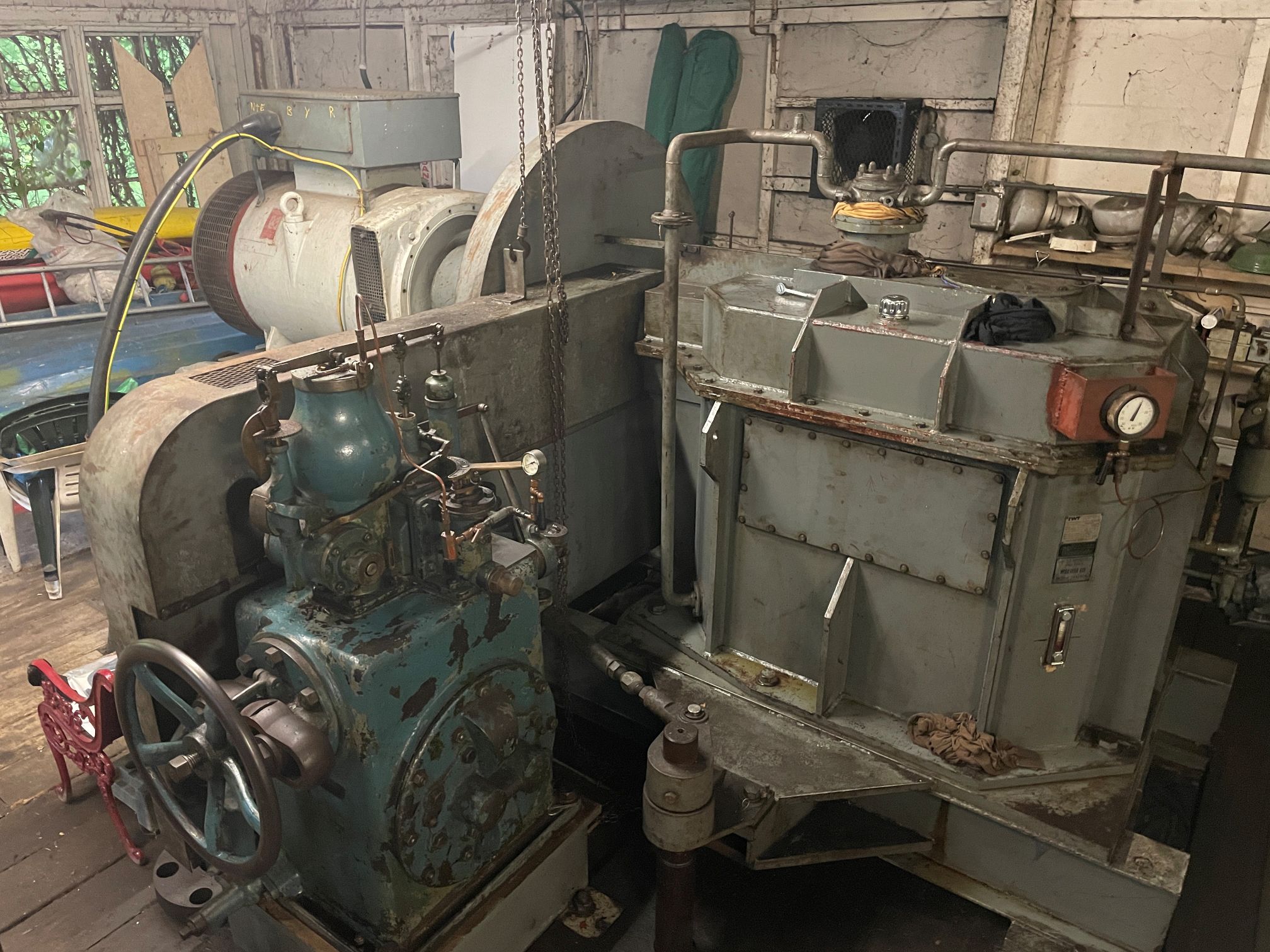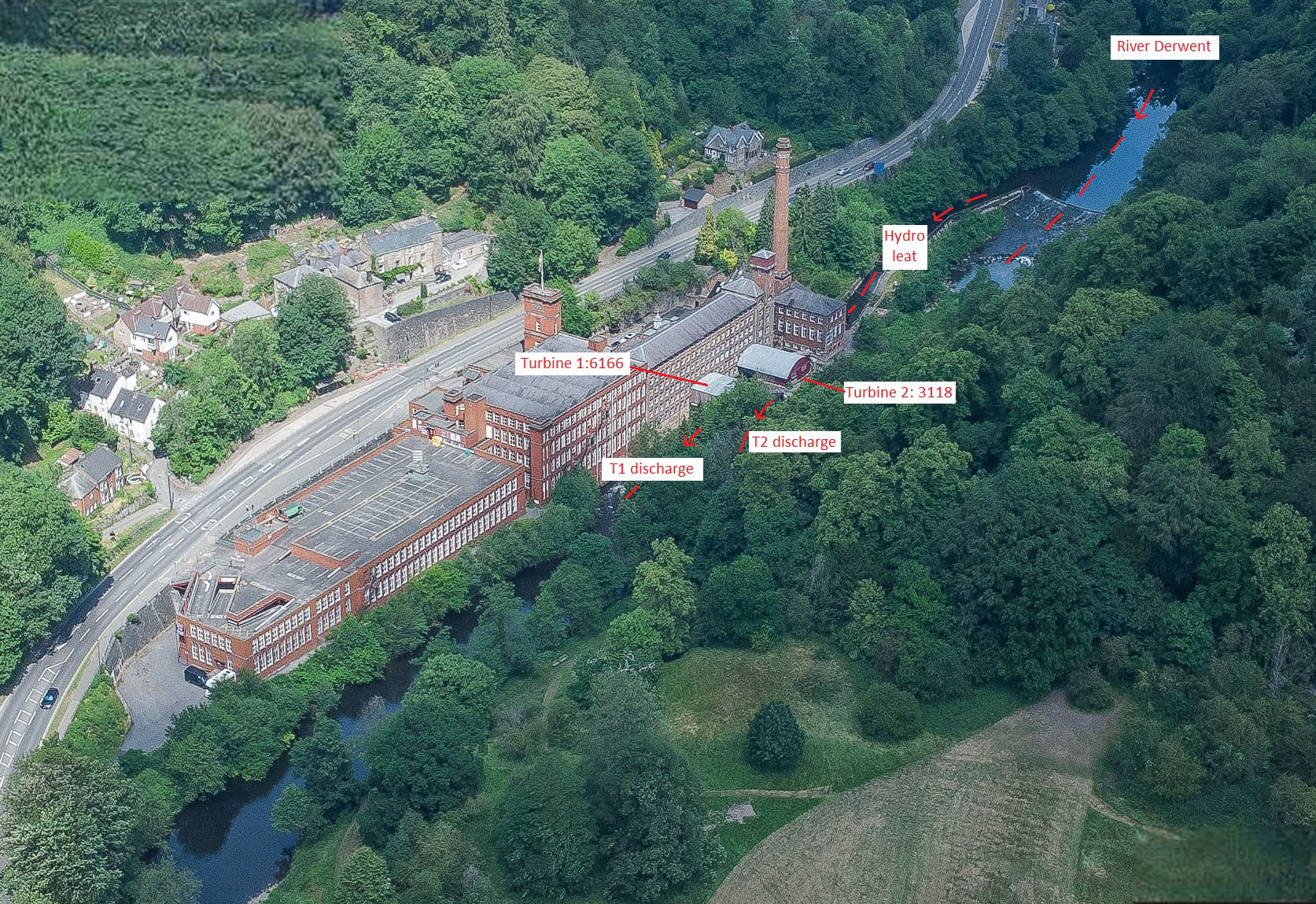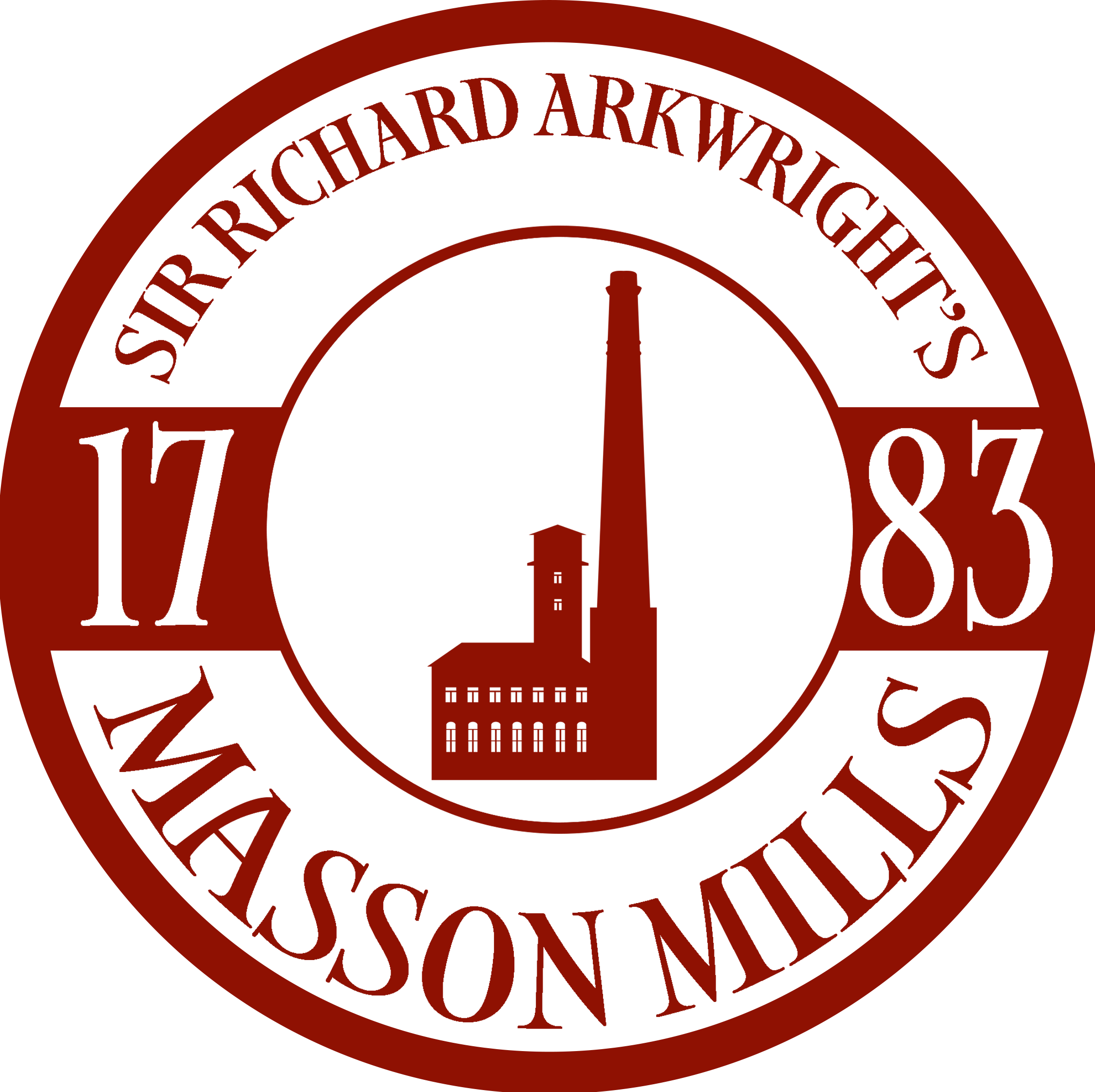
Masson Mills is a key feature of the Derwent Valley Mills World Heritage Site. This 18th century cotton mill is widely considered to represent the pinnacle of Sir Richard Arkwright’s career, and is emblematic of the Industrial Revolution.
The site was originally powered by one 18’ diameter waterwheel, with a second wheel added some years later; drawing water from the same leat. The mill also used steam power, which was added around the start of the 20th century.
Water power at Masson Mills was electrified from 1924, when the first hydroelectric turbine was installed. This was a 100kW Gilkes pit-Francis turbine, replacing the second waterwheel. That turbine remains on site today, but is currently disused.
Another pair of hydroelectric turbines were installed soon after, replacing the main waterwheel. These were subsequently replaced by a fourth turbine, another Gilkes pit-Francis, in 1974. With an installed capacity of 160kW, produced using 6,000lps on 3.35m head, this is the turbine that is operated by the DHPL Group today.

Masson Hydro generates an average of 730MWh each year. This is equivalent to the average energy use of 135 typical mid-sized UK households, and saves 365 tonnes of CO2 emissions when compared to gas-fired electricity generation.
Electricity generated by Masson Hydro powers all operations and services at the property, which does not use gas or other fossil fuels. Based on operations in 2023, site uses account for approximately 20% of the energy generated, the remainder is sold into the local energy network.
No longer functioning as a cotton mill, Masson Mills currently offers a working textile museum; visitor center and coffee shop; conferencing and events; office space; and further areas to let. For more information, please visit:


